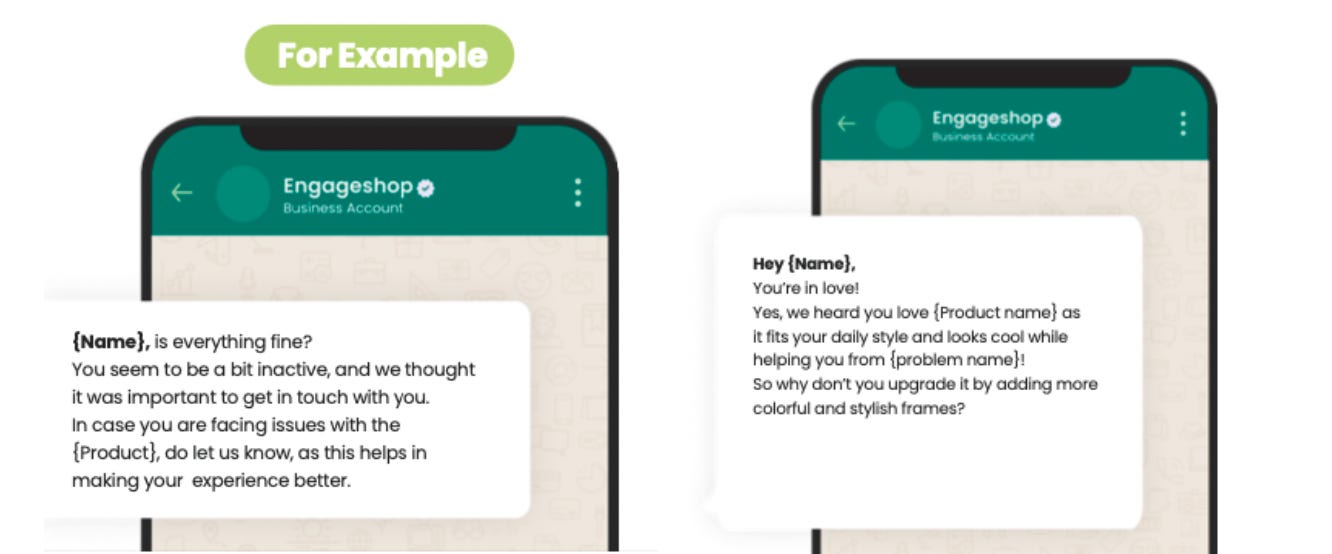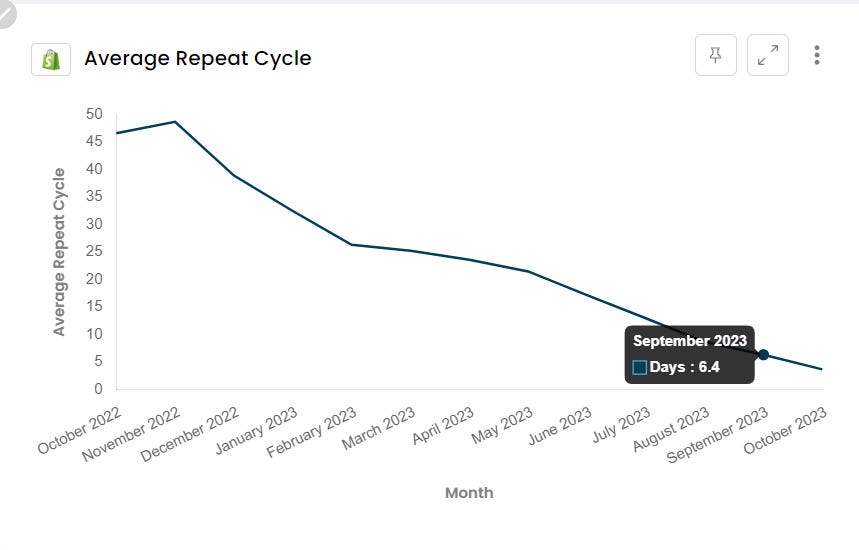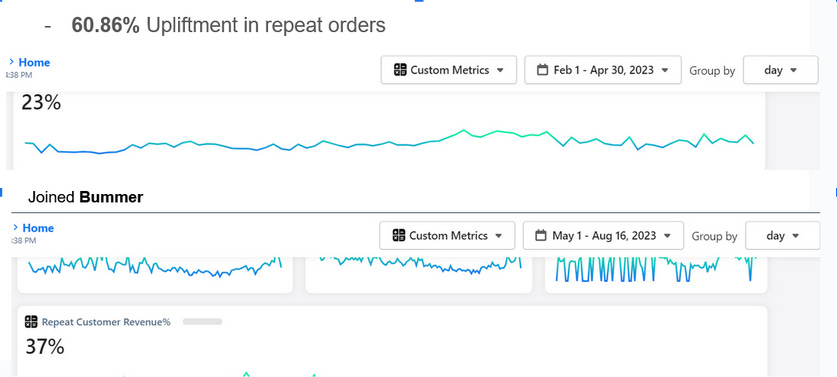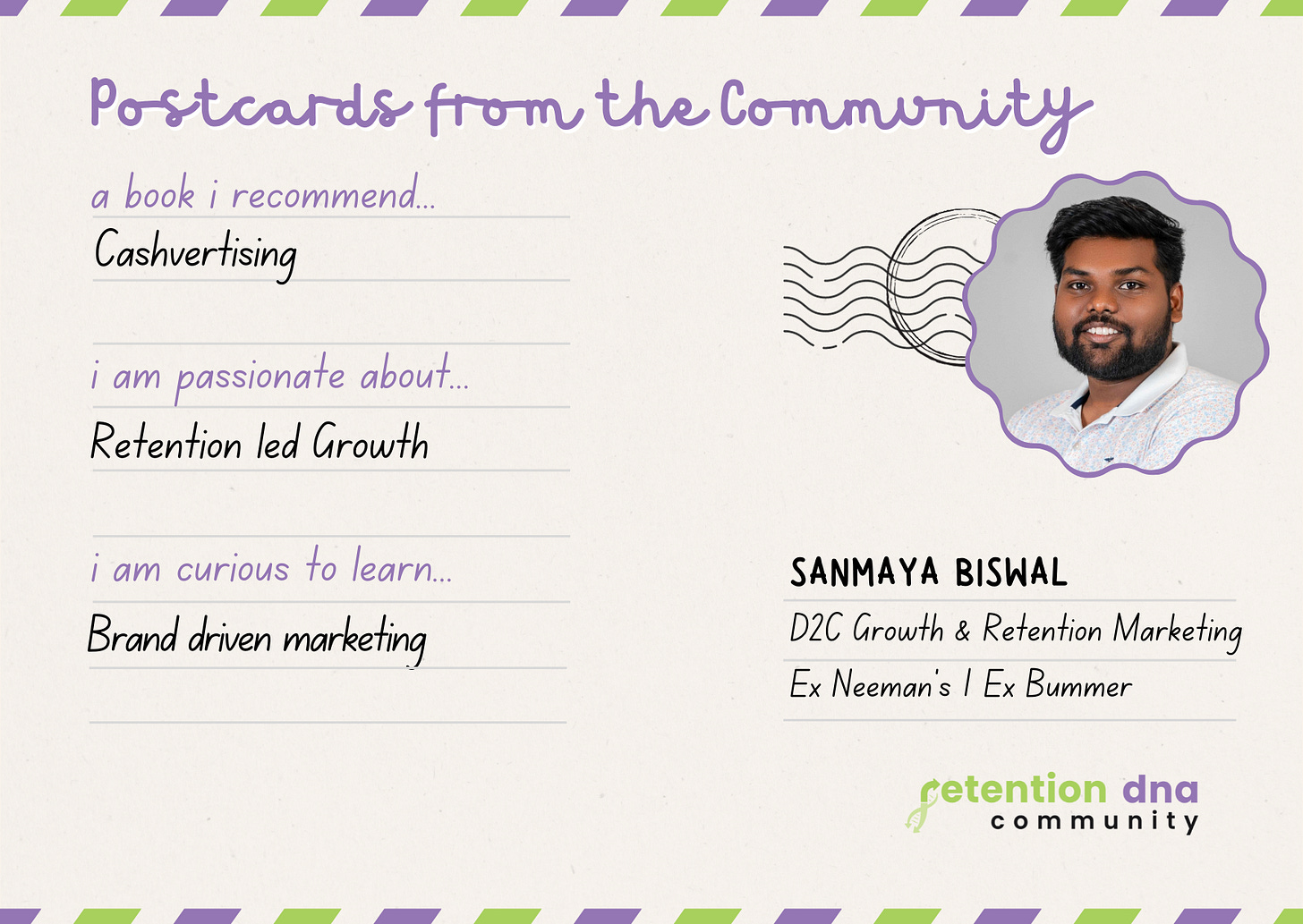Unveiling the Dynamics of Product Adoption: How To Succeed in Modern Markets
A single ad-hoc campaign cannot fix your retention efforts. If your customers aren’t actively using your products, don’t bombard them with different campaigns to turn them from casual customers to loyal ones.
Instead, help them adapt to your products well with product adoption campaigns or workflows. This ensures your customers actively use your products, increasing their chances of repeat purchases.
Lastly, this helps you solve silent customers’ barriers, adopt the product, and eventually build a healthy customer cohort group, which helps build brand retention.
Imagine this: You join a company as a retention manager, do a data analysis, and realize that your repeat rate has been struggling to grow, LTV scores have been declining, and the cohort’s performance is terrible. But where is the problem?
So far, everything looks correct:
All significant campaigns – like ATC abandonment, product abandonment, thank you flow, product replenishment flow, etc. – are automated.
All copies have the proper conversion framework.
Ad Hoc campaigns are running fine and are backed by a proper calendar.
There’s an awesome product with good NPS from previous customers.
Lest to say you’re worried. You’ve got to fix it, but the problem is unseen.
However, doing another data analysis gives you a few insights like:
Your new customers’ repeat order conversion rate is low.
First-time buyers who placed repeat orders were because of external factors
like discounts and offers.
Your journey conversion for first-time
buyers in product drop-off journeys is great, but the same is not true for repeat customers.
Your cross-sell and upsell campaigns have high open rates but minuscule conversions. Your ad hoc campaigns often perform only for loyal customers.
The issue here? Your customers haven’t adopted your product correctly.
What is Product Adoption? And why is it important?
By definition, product adoption is a process in which your users – casual customers
and first-time buyers – use the product they’ve purchased/signed up for at a higher frequency than general to achieve their end outcome.
Simply put, it ensures your customers use the product they purchase and helps them adopt it in their daily routine.
One would think that customers eventually use the products they buy. But here’s where you’re wrong.
Think of products you bought and never used or used for a while but never again. I call this The Wardrobe Effect.
Because your product never sees the light once it ends up here.
Quick back story: This is a real-life scenario that I faced during my time at Neeman’s. While digging deep into what might be the possible reason for the Wardrobe Effect to take place, I analyzed the behavior of two types of customer cohorts:
Loyal customers: Often buy products from the brand, heavy product users, highly satisfied, and a swift 2nd purchase. Casual customers: Have purchased just once, low engagement across channels, never bought again, or bought again only with heavy offers.
What were the insights from these cohorts?
Most loyal users used the product daily and often compared to casual ones.
Most loyal users bought their 2nd product in a similar range for
their partners.More loyal users’ preference for a sneaker pair changed from Brand X to Neeman’s.
Most loyal users made their friends buy the product because their friends noticed them wearing it.
Most casual users who never bought frequently again had just used 1-3 in a month.
Most casual users went back to sneakers from their original, frequently-bought company.
From these insights, we realized how important it is for us to make sure users at least use our products for them to switch to our products efficiently.
But why did this happen in the first place? Because we as humans don’t want to move out of our comfort zone.
Think of it this way: You see a shampoo ad claiming it helps build strong hair in 10 days. But post-purchase, you don’t get hooked. Now, while there could be hundreds of factors for abandoning the product, the main one is lack of Product Adoption.
How can you solve this? Answer these prerequisites first:
Definition of your loyal, casual, and activated users
Aha! Moment of a product
Time to get the aha! moment
General repeat frequency and timeline of reusing the product
Engagement & retention cycle (focus point here!)
What are the Phases of Engagement and Retention Cycle?
The Connect Phase:
The user makes the purchase, and the order is about to reach the customer. Your user is most excited at this stage as they wait for the order to come - and companies often miss taking advantage of that fact.
How do companies use this phase?
Generally, companies share order details and leave the customers blank often, which leads to returns and customers’ interest getting down.
PRO TIP: Remember, this phase has a high dopamine release, and the more dull it gets, the more you lose your customers’ interest in upcoming products.
How can you use it effectively?
After sending relevant info to the users, keep them updated with every step of the order and keep them engaged. You can take advantage of surveys and attractive quiz- related solutions to build up the excitement. The main goal of this phase is to keep them excited.
What are the Phases of Engagement and Retention Cycle?
Product Usage Phase:
This is when their order has finally been delivered, and the goal of the phase is to make sure they start using the product, keep using it, and experience the Aha! Moments
Let’s take Lenskart’s example here:
Use case: Customers who’ve placed their first order for Lenskart’s Blue Lens
Timeline: Depends on product, generally
7-21 days.
This product usage is further divided into three stages:
General Product Usage Nudge:
This is the day the user receives the product. Your job is to ask/nudge them to start using your products proactively, engaging with all the users – 3-5 days from the day they get the product. For instance:
Activity Branching:
Now post 3-5 days of product nurturing, you can then divide your audience base into three categories:
Active: Users who are more proactive, engaged, and made some actions.
Mid-Engaging: Active often but not regular.
Dormant: These could be your potential churn customers
Once you divide them into these categories, make the next 3-4 days automation messages catering to these groups.
Adoption Buildup
Keep nudging users based on activity. The more users become engaged, the more the usage increases.
Feedback looping for non-active customers
Getting nonactive users to engage back with you within your product adoption nurture timeline – which could be either between 7-21 days – is super crucial since this helps you reduce the chances of churn or nonproduct usage.
And the best way to find that out is by taking feedback and knowing what has made them inactive and there are 2 categories their factors will fall into: Uncontrollable: These activities are beyond the control of a brand, and the brand might not be able to solve this. For instance: A customer has left for a different country, gifted the product to another person, etc.
Controllable: These activities are under the control of a brand which can be solved to make the users go
from inactive to active in the nurture sequence. For instance: Overly salesy communication, product failure that was never reported (which often happens and is most dangerous because the customer never complains and the brand isn’t able to figure it out), etc. For factors like these, build a workflow that can be executed whenever a user portrays traits of an inactive user while being in the product adoption journey and trigger product feedback.
Habit formation nudge to repeat
Once you have your customers who are super active, mid-active, and dormant, you can now pitch for an upgrade of variants or cross-sell complimentary items in case your product ticket size is higher.
Now, You’ve done so much, but
what’s the result of all these additional expenses and investing time and energy? What happens when your manager says, “Show me some results?”
It’s Time For Results
Improvement 1:
Time to convert: It’s one of the crucial data points that will help you effectively measure your product adoption journey; this basically shows how successfully you’ve made your customers switch over to your offerings.
This, in return, increases the CAC, and as the user gets into the habit, your other metrics, like cohort retention rate and LTV values, gradually start increasing,
Below are my results for M0, M1, and M2 cohort retention for an underwear brand.
Improvement 2:
M0, M1, M2 Retention cohort
In the above examples and results, we can clearly see the difference and impact of a successful product adoption strategy that can help you to get repeat buyers for your brand. If your product is truly great, then the product adoption strategies will help you build user habits and help customers switch from their previous solutions faster and in an efficient way.











